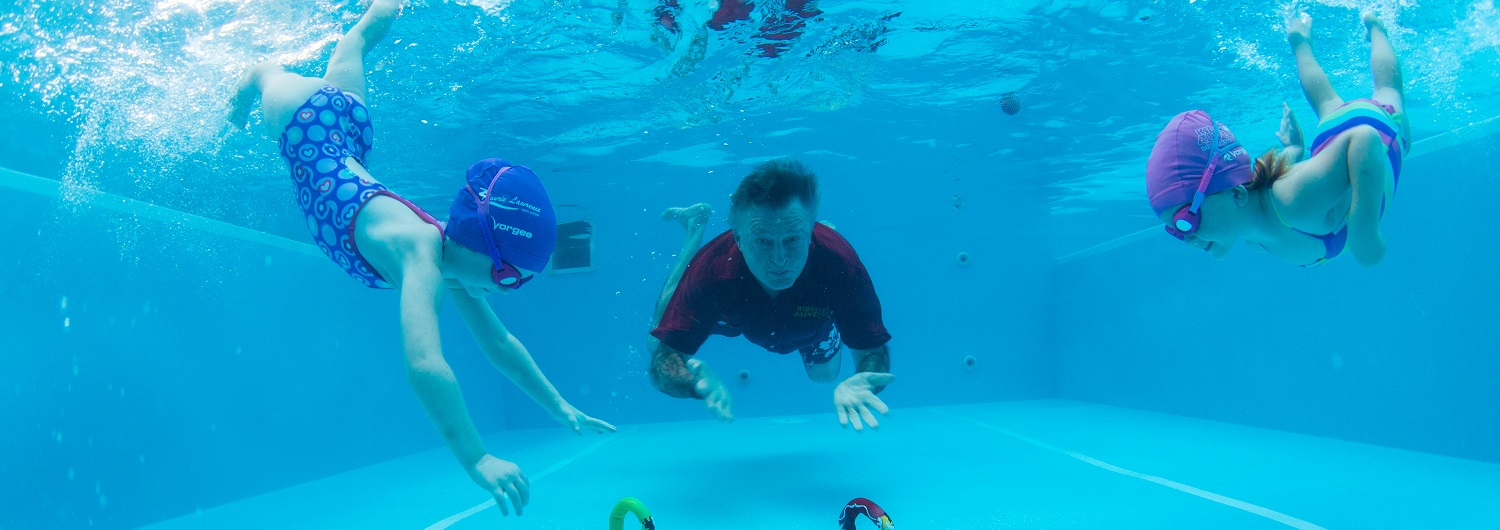When Jon and Susan Foss founded Foss Swim School in 1993, they started a program that was unlike any other in the U.S. at the time. In the years that followed, it was not yet clear that it would be a sustainable business as it grew to multiple locations. But Jon and Susan found inspiration in the success of swim schools overseas, and forged relationships with their founders. One of those was Laurie Lawrence, founder of the Laurie Lawrence Swim School, founded in 1966 and with three locations today in Australia, and one of the leading child water safety advocates in the world.
In addition to being a great swim teacher and businessman, Laurie is a successful Olympic coach, having helped lead the Australian men’s swimming contingent at the 1984, 1988 and 1992 games. Swimmers he helped coach amassed 10 gold, 11 silver and 12 bronze medals during those games, and 23 world records in and out of the Olympics.
We recently caught up with Laurie to get his take on the importance of learning to swim, differences between Australian and U.S. swim cultures and helping parents put swimming into a new perspective:
There’s a dramatic difference between Australia and the US in ability to swim the crawl 300 yards with side breath – 70% to 6%. Thoughts on why?
LL: First, I think as an island nation, where most of the population lives close to the sea, swimming has a high priority for parents. We love our swimming. Swimming stars are heroes here. Second, many primary schools in Australia have pools. And the Royal Lifesaving Society is lobbying the federal government to make sure everybody, by the time they go on to middle school, can swim. There is also the swim school industry in Australia, which is quite strong. There has been a huge influx of infant aquatics in Australia.
When should a child start learning to swim?
LL: As soon as you come home from the hospital, and it starts with water acclimation. In the Kids Alive program I started, there is a water safety DVD that goes home with every mother of every child born in Australia. In that DVD I demonstrate how to hold your baby in the bath, condition the baby to hold their breath using verbal triggers. It’s trauma-free. We make sure they maintain that affinity for water they have when they are born by pouring water over their faces early. It’s a drowning prevention measure, but it’s also part of learning to swim. Kids should learn to swim in a fun, happy environment.
How often should kids have swimming lessons?
LL: If a child has just a 30-minute lesson a week, the max you can have is 26 hours of swimming a year. If you wanted to teach a child to read, would you read to them just one day a year? Just half an hour a week? It’s a no brainer that the more you practice, the more you learn. But it’s not just about lessons. If you just get them in the water every day and just play with them, they would be safer just because they were more comfortable with the water. Even if you make time on the weekend to go to a pool and a lake it will give kids more exposure.
How long does it take to teach a child to swim well?
LL: It depends how you go about it. The best, quickest result for a student is to go every day for a couple of weeks. You’ll be amazed how much they learn. The higher frequency, the more regular, the faster they learn. But I get that finances and time-poor parents makes it difficult. If all you can do is once-a-week lessons, then do that.
We have heard some experts say the window of opportunity to learn to swim well begins to close by age 6 and is almost completely closed by age 11. What is your perspective?
LL: I think the best age to learn to swim – freestyle, front crawl – is 4 years of age. That’s when they get their fine motor skills and are old enough to take instruction. Older, they haven’t missed the opportunity to learn, you can always learn. But they’ve missed a lifetime of fun.
What other advice would you give to parents?
LL: Start early. There was a study in Australia showing that among kids who have swim lessons early, it builds their social, emotional, physical and intellectual capability. Also, it’s not about swimming long distances. I like to teach children swimming short distances because then I can affect their technique. Practice makes perfect, but bad practice doesn’t. If you swim too long, they get tired and their form gets sloppy. So I keep them short and build distance gradually. If you let them do long distances sloppy, they’ll be a sloppy swimmer forever. And remember, everyone can learn to swim. I started teaching a boy when he was 4 years of age, and he couldn’t put his face under. And I took him to a bronze medal in the Olympics in 1984. Not everyone can become Michael Phelps, but everyone can get better.
